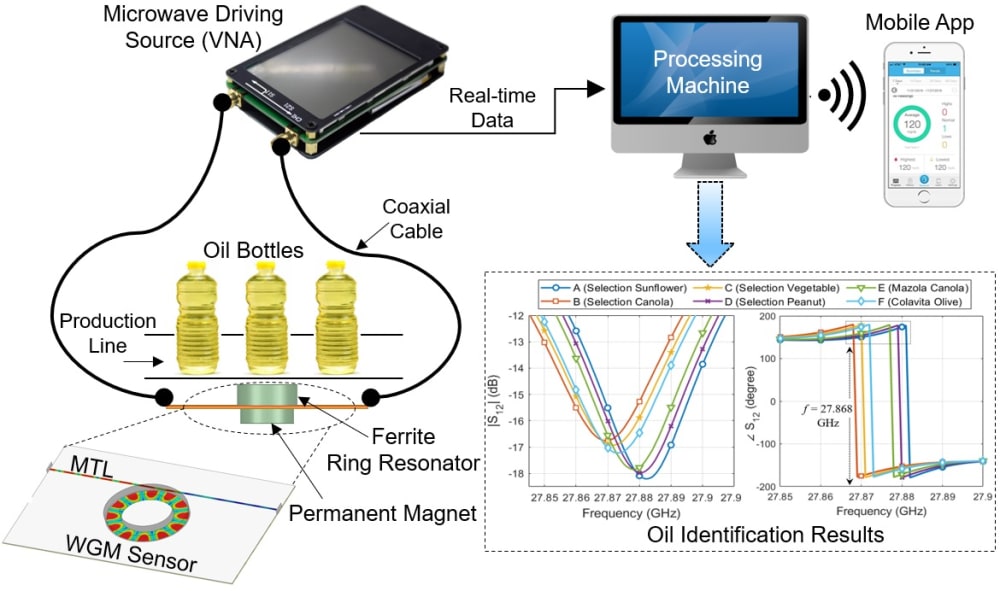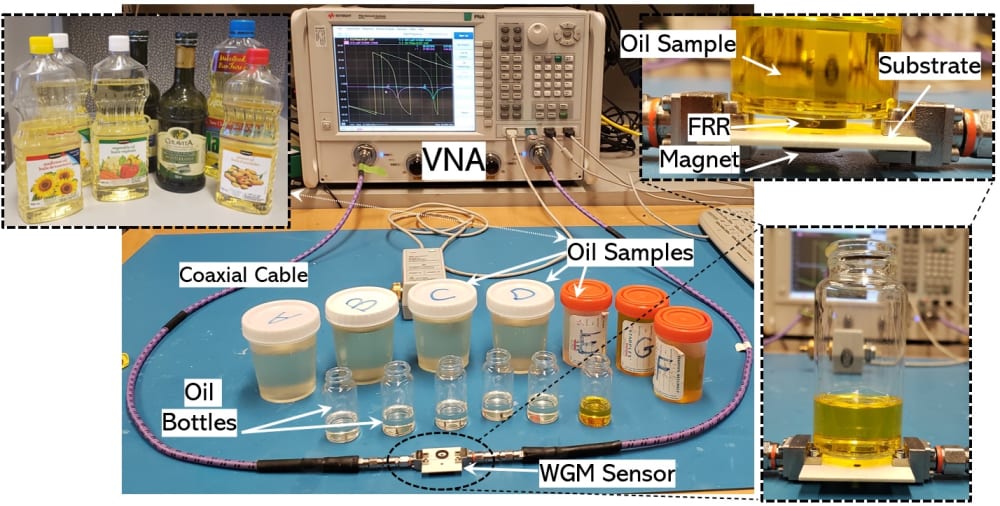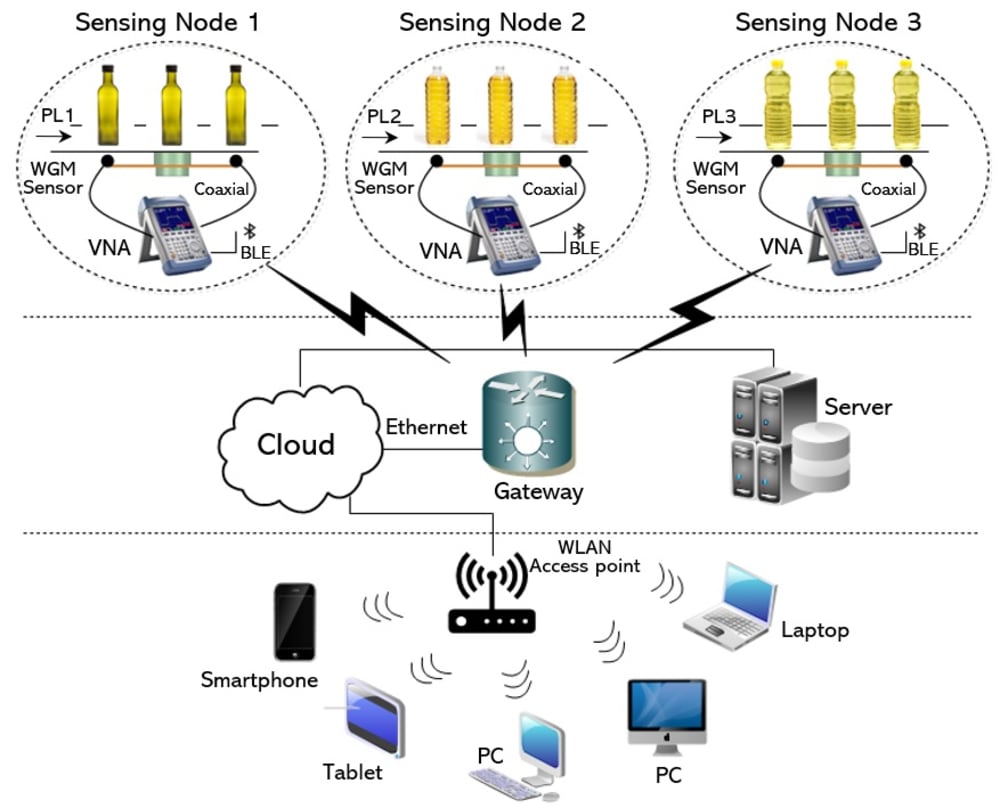A growing demand has been established over the recent years for quick and inexpensive oil adulteration detection testing to convoy the automated processes in the industry. Monitoring the oil's quality is paramount not only during their production, transportation, and storage phases but also, more importantly, for controlling their authenticity by the regulatory authorities. Extra virgin olive oil (EVOO), for instance, is massively prone to frequent fraudulent activities in the oil industry. To lower the cost of production, fake olive oils are currently produced from mixing cheap and low-quality edible or botanical oils like soybean, sunflower, and canola types with EVOO of high quality and cost. The adulteration results into modulating the composition of the fatty acids and compounds while removing many of the EVOO flavour-related features of much desirability. That would also reduce the associated health benefits and raise health issues for customers who are allergic to some supplements such as peanut proteins.
Towards implementing a smart IoT monitoring system that impedes the frequent fraudulent practices, a low-resource microwave sensor of small size (~ 6 cm3) and high sensitivity is developed for rapid non-destructive detection of oil types, brands, and/or quality without having to open any bottles off-shelf. The Whispering-Gallery-Mode (WGM) technique is used to implement the sensing platform in the millimeter-wave range 22 – 32 GHz where the microwave power from a microstrip-line is coupled into a ring resonator made of ferrite material of high resistivity and low-loss. Its magnetic anisotropy is exploited to engender a non-reciprocal effect on the induced modal fields in the presence of a bias magnetic field. The acquired nonreciprocity feature would allow for checking the oil products, when placed nearby the sensor, at multiple instances of highly sensitive WGM modes at distinct frequencies in both S12 and S21 transmission signals. Illustration 1 depicts the sensor implementation at one hot spot a few millimeters underneath the production line where all oil bottles pass through. The interaction of the sensor E-field with the oil material on top of the ring resonator, allows for recording its scattering response in few seconds by the connected Vector Network Analyzer (VNA), analyzing, and comparing it against a reference response using an AI-based software running in the attached processing machine to report any differences in quality between oil products. Measured scattering results on a fabricated prototype (illustration 2) have demonstrated its detection functionality with significant changes in resonance frequencies, phases, and dips of the induced WGM modes when testing various edible oils.
The microwave sensor enjoys many features of compact size, low power consumption, affordable cost, and high sensitivity, thereby making it attractive not only for development as an independent quality detection platform in the oil processing industry but also as a complete autonomous system based on IoT (Illustration 3) for online, rapid, non-invasive, and cost-efficient testing that substantially reduce the product processing losses, labour shifts, operational costs, and effectively improve the product quality and supply-chain. A portable version could be developed to rapidly detect any fraudulent oil brands and/or producers.
Like this entry?
-
About the Entrant
- Name:Ala Eldin Omer
- Type of entry:teamTeam members:Ala Eldin Omer, University of Waterloo
Suren Gigoyan, University of Waterloo
George Shaker, University of Waterloo
Safieddin Safavi-Naeini, University of Waterloo - Software used for this entry:ANSYS HFSS
- Patent status:pending








